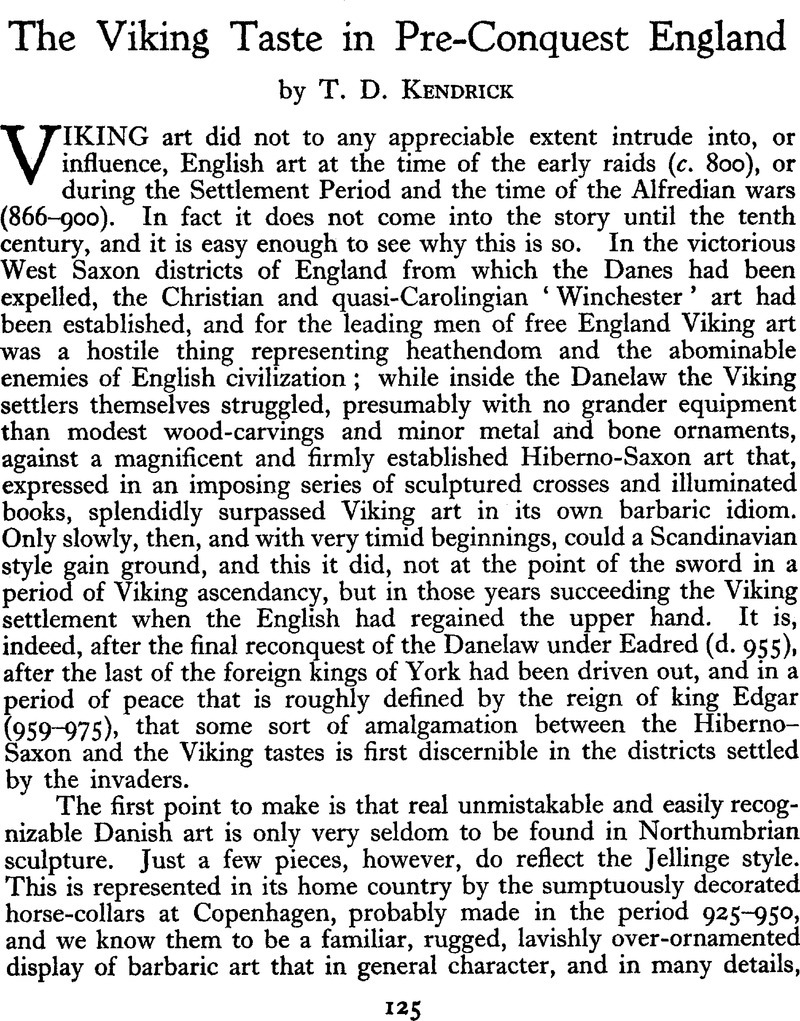Published online by Cambridge University Press: 02 January 2015

1 W. G. Collingwood, Northumbrian Crosses, fig. 144. London, 1927.
2 Collingwood, op. cit. fig. 187.
3 ibid., fig. 184.
4 ibid., fig. 175 aa-dd.
5 T. D. Kendrick, Anglo-Saxon Art, plate XCVII, London, 1938.
6 ibid., plate LXIII.
7 Collingwood, op. cit. fig. 97.
8 There is a second Aycliffe cross of even greater interest from the point of view of the Hiberno-Saxon revival, but it does not seem to have been illustrated. Collingwood, I think correctly, assigns the St. Oswald's shaft at Durham to this period. I am sorry to say that when I was studying an earlier period I attributed it to the 8th century (Anglo-Saxon Art, p. 137). This mistake at least shows that the 10th century revival is real.
9 Kendrick, op. cit. plates LXII, LXXXVIII.
10 A. W. Clapham, English Romanesque Architecture before the Conquest , p. 135, fig. 42. Oxford, 1930.